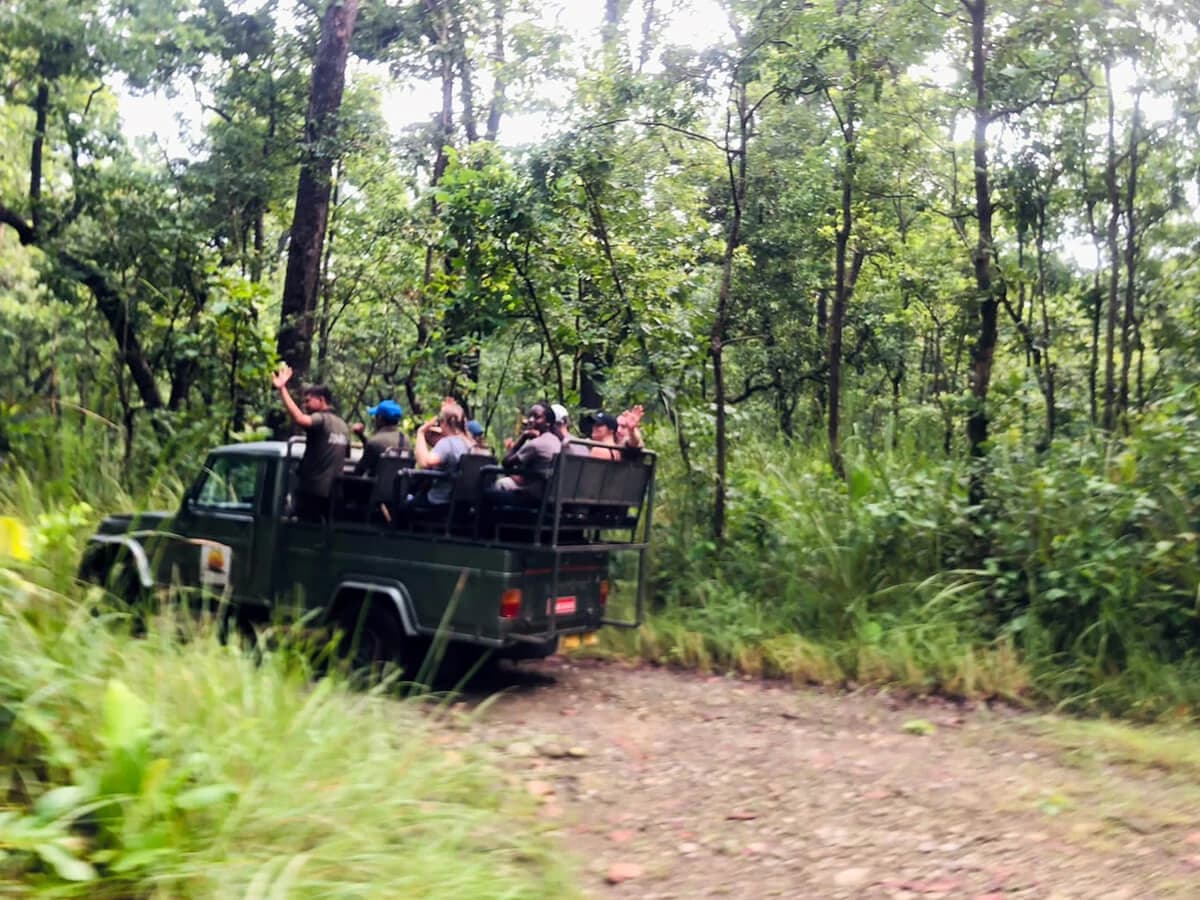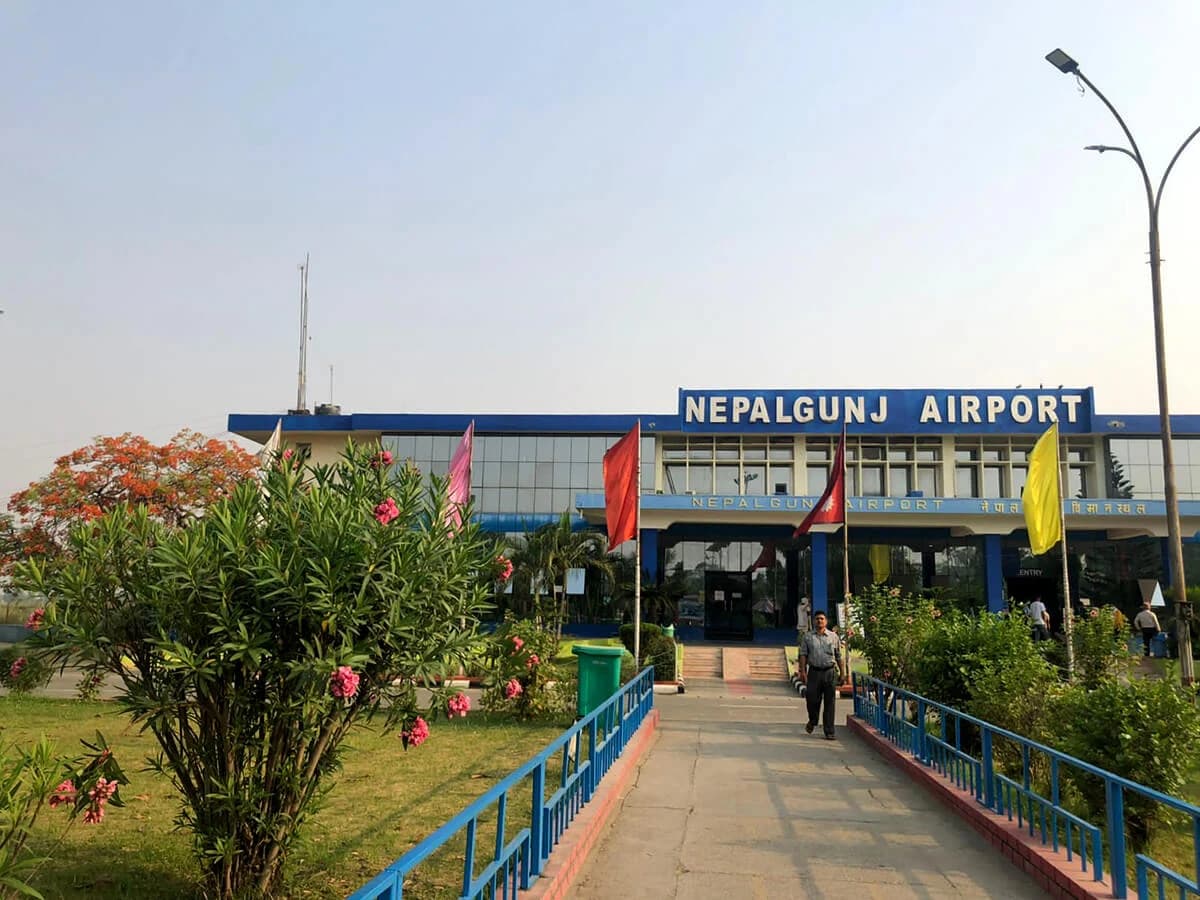The largest protected area in Nepal's Terai region is Bardia National Park, which is located in the country's west. It is a wildlife lover's paradise, covering an area of roughly 968 square kilometers. Magnificent creatures like the Asian elephant, one-horned rhinoceros, Royal Bengal tiger, and even the endangered Gharial crocodile can be found in the park. Bardia offers both beauty and adventure with its blend of open grasslands, winding rivers, and dense sal forests. It’s also home to the Tharu community, whose rich culture adds to the park’s charm. Bardia feels like a window into Nepal's untamed interior, whether you're there for a safari or just to take in the scenery.
Bardia National Park Jungle Safari
Bardia National Park Jungle Safari Overview
Established as a national park in 1988, Bardia National Parkis located in the western region of Nepal. Its total area is 968 sq km and includes a mix of rich ecosystems, including the Churia Hills in the north, the Babai Valley, and a buffer zone. About 70% of the park is covered by sal trees, with the rest comprising wooded grassland and riverine forest.
The park is drained by the Karnali River, which is home to rare Gangetic Dolphins. The park is a well-preserved habitat for one-horned rhinoceroses, Asian elephants, blackbuck, and crocodiles. More than 30 different mammals, over 230 species of birds, and several species of snakes, lizards, and fish have been recorded in the park's forest, grassland, and rivers. Langur, rhesus monkeys, civets, hyenas, wild dogs, sloth bears, otters, blue bulls, deer, and wild boars are commonly spotted creatures.
Jeep safari opportunities are available, or you can also go for a jungle walk with our nature guide. You can also visit elephant shelters and crocodile centers or go bird watching. One of the major attractions of Bardiya is the culture of the Tharu people, who are the indigenous inhabitants of the park. An evening or two of cultural programs is not to be missed.
The park is easily accessible by both air and land routes. One of the easiest ways to reach Bardiya is to take a flight from Kathmandu to Nepalgunj and then take a short jeep ride to the park. People can travel from the India-Banbasa-Mahendra Nagar border crossing. If you are near Nepalgunj, then visiting Bardia National Park will be a short drive. There are bus services from Kathmandu to Mahendra Nagar and a stop at Ambassa for park entry. Bus tickets cost about 21 USD and take about 18 hours. We will arrange the pickup services at the Ambassa. Whether you travel by bus or by air, the choice is yours!
Highlights
- Bardia National Park is a home of Royal Bengal Tiger
- Encounters with wildlife and mammals
- Adventure Jungle walk with countless numbers of deer
- Bardia National park own World No.1 sustainable destination in Asia pacific
Bardia National Park Jungle Safari Itinerary Outline
- Day 01: Fly to Nepalgunj and drive to Bardia
- Day 02: Full day Jungle activities
- Day 03: Jungle Activities continue
- Day 04: Return to Kathmandu in the evening
Bardia National Park Jungle Safari Itinerary
After your breakfast, we transfer to Kathmandu domestic airport and fly to Nepalgung. Afterward, we take a Jeep ride to the Bardia National Park, once you arrive at the resort, you will have a refreshment drink. In the afternoon discover the tiger tracking tour and Tharu life and culture with a guided walk from the lodge through small settlement of Tharu villages and farmland.
As soon as you finished the breakfast, we start our Jeep safari tour inside the National park, for tiger tracking and wait near by the water holes where tigers crosses from the territory to another. You will have pack lunch in the afternoon. You will also enjoy with the jungle walks to see more animals and birds. Evening dinner and accommodation.
Today, we have a jungle walk tour for full day as we move to various places to watch for the elusive Royal Bangal Tiger. You will stop for lunch in the afternoon nest to the river where is the best sport to see the animals. Evening dinner and enjoy with Tharu cultural program.
Once you finished the breakfast, we transfer you to the Nepaljung airport and take a iconic flight to Kathmandu. You will be picked up by Global Adventure Trekking in Kathmandu domestic airport.
Bardia National Park Jungle Safari Cost Details
Includes
- Experienced English Speaking Naturalist Jungle guide
- 3-Night Accommodation in twin-sharing or single rooms
- Meals: 3-Breakfast, 3-Lunch, and 3-Dinner
- Private Jeep safari into the park
- NepalJung Airport pick up and drop off
- Bardia National Park Entry permit
- All Jungle Activities as per itinerary
Excludes
- Bar, Laundry, and Telephone bill,
- Kathmandu-Nepaljung-Kathmandu flight tickets
- Items of personal nature
- Air transport (KTM-Nepalgunj-Kathmandu)
Dates & Availability
A trip to Bardia National park is the most exciting trip to see the Tiger. We do organize group and solo trips to Bardia National Park at the best affordable price. Please write us back with your preferred date of travel. We are happy to tailor the itinerary if necessary.
Essential Information
Please follow the rules of National Park. Some activities may give up due to the weather, park restriction and so on.




